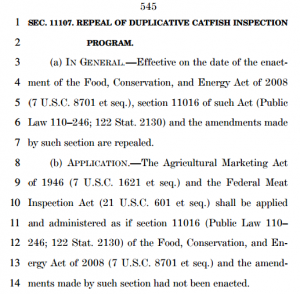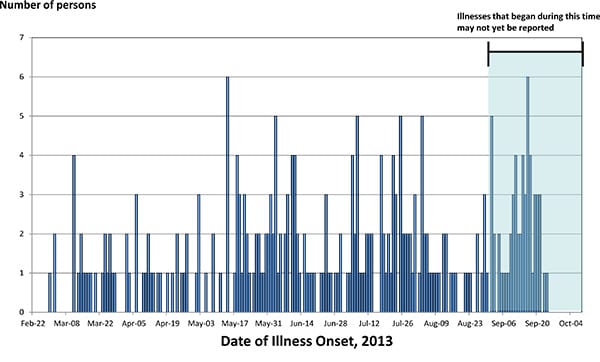As I am endlessly complaining, the farm bill is so detailed, complicated, and opaque that no rational person can possibly understand it, let alone a member of Congress.
To wit: catfish inspection.
As Gail Collins noted in her New York Times column a week or so ago, some members of the House want the USDA to inspect catfish, not the FDA (which ordinarily is responsible for fish inspection). The current FDA inspection office costs $700,000 per year. The USDA office, established by the 2008 farm bill, costs about $14 million a year, even though the USDA has not gotten around to issuing rules or actually inspecting catfish.
What is this about? Not fish safety, really. It’s about protecting catfish farmers in the South and setting up “more rigorous” safety criteria that will exclude competitive foreign catfish imports, especially from Vietnam.
The House version of the farm bill calls for repeal of USDA catfish inspection as a cost-cutting measure (the Senate farm bill does not mention catfish inspection, which means it leaves the USDA office in place).
Thad Cochran, Republican Senator from Mississippi, wants the House to delete the repeal provision, keep USDA in charge, and, thereby, protect the Mississippi catfish industry from foreign catfish imports.
Politico Pro quotes a member of Cochran’s staff:
Sen. Cochran has made it clear that his priority is to complete the new farm bill and get it signed into law. It sounds like there are some who have a deep under-appreciation of the diversity of Mississippi’s agriculture industry and the importance of this bill to the state’s farmers, foresters, hunters, and those in need of nutrition assistance.
The New York Times also points out that although some watchdog consumer groups support tougher safety standards for catfish (because of lower foreign standards for antibiotics and other chemicals), a Government Accountability Office report in May 2012 called imported catfish a low-risk food and said an inspection program at the Agriculture Department would “not enhance the safety of catfish.”
Now, says the Times in another article, a coalition of budget watchdog groups and a seafood trade group are lobbying to repeal the USDA’s inspection program.
All of this is in the House version of the farm bill, but unless you are a lobbyist for the catfish industry, you would never know it from the bill itself. Here’s the relevant section from the House bill.

As Gail Collins puts it,
See, this is what I like about the farm bill. The agriculture parts harken back to the golden era when Republicans and Democrats could work together to promote stupid ideas that benefited the special interests in their districts. And then go out and get inebriated in bipartisan drinking sessions. Now everybody is in the gym and then shutting down the government.





